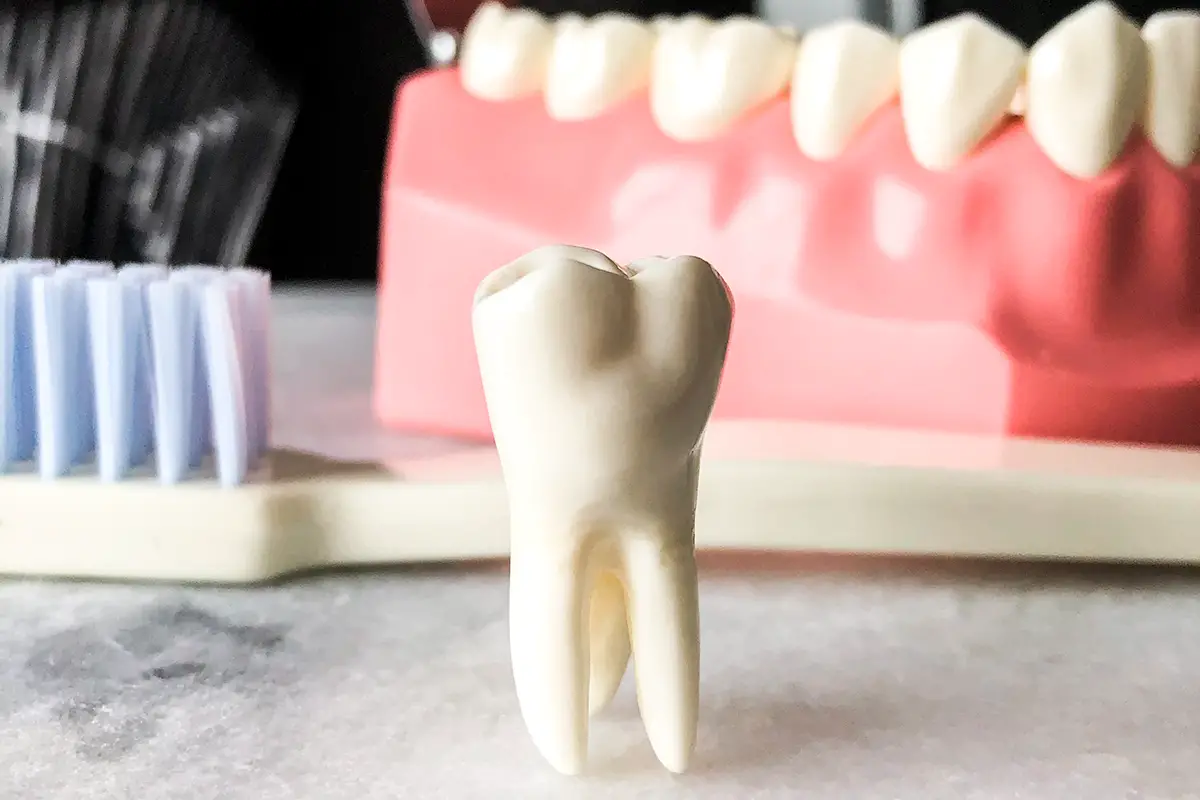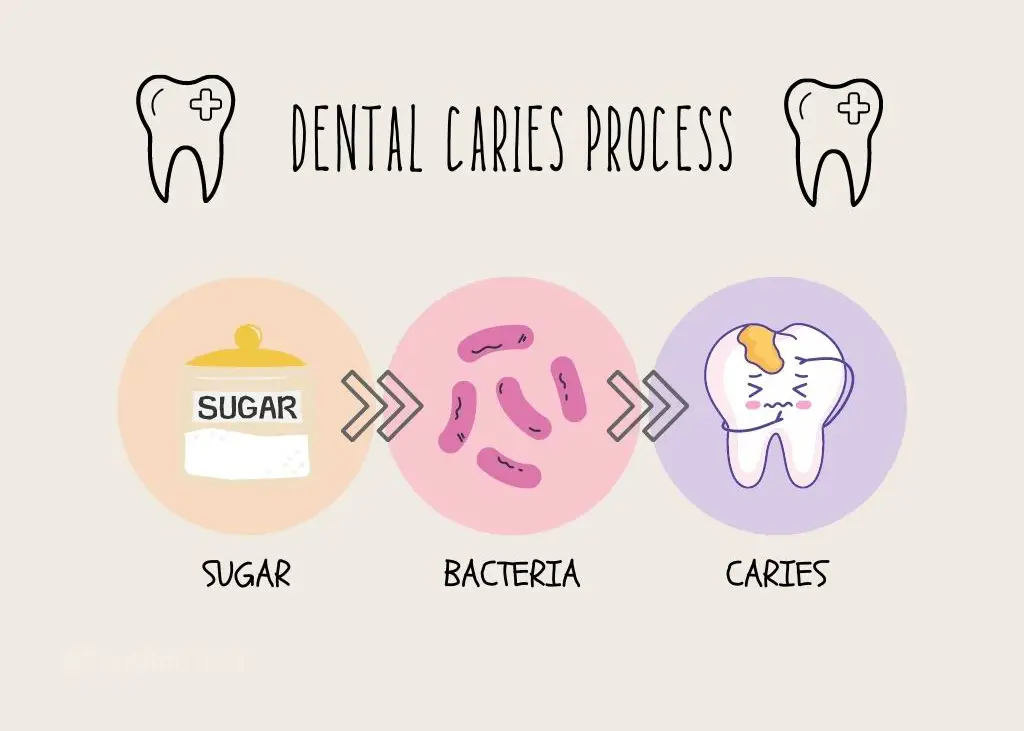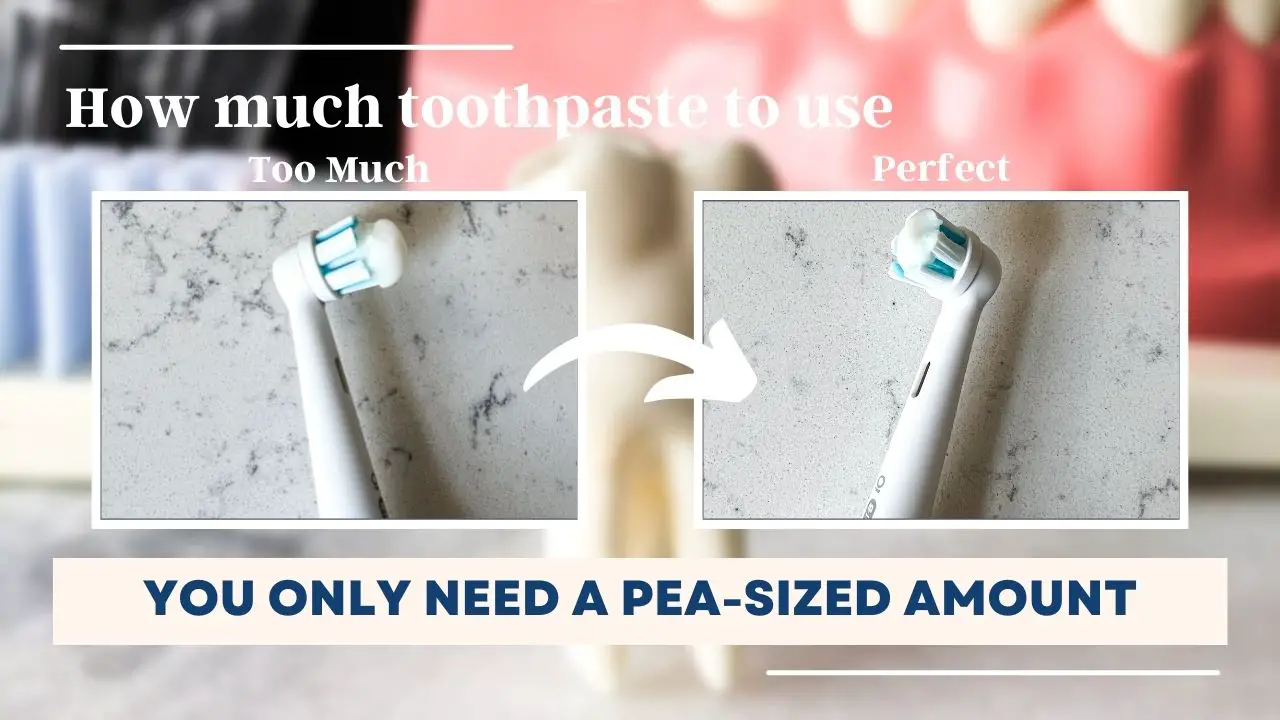
Translucent teeth can make the teeth appear less white and, due to thinning teeth, can leave the teeth susceptible to chipping and breaking. As a dental hygienist, I discuss preventing tooth translucency and maintaining strong enamel with many of my patients.
Reducing the amount of time the mouth is below a pH of 5.5 and avoiding abrasive toothpaste can help prevent acid erosion and wear of the tooth surface. As enamel is lost, it becomes thinner, leading to tooth translucency.
Many factors can cause tooth translucency, and in this post, I discuss how to prevent and maintain tooth structure and the oral hygiene habits that will maintain enamel thickness.
Tooth translucency, what it is, and the anatomy of the tooth
It is essential to understand why teeth can appear translucent. The natural appearance of the teeth is supposed to be slightly translucent at the tips, especially the front teeth.
The front teeth are thinner and act as shears to cut the food we are biting into. This edge can be subjected to acid food and drink regularly, increasing the risk of enamel loss.
Because this edge is much thinner, it is only comprised of enamel, as the yellow dentin layer underneath does not extend to the tip of the tooth. Enamel is more translucent, but then there is a thick layer of it, and it appears more white; however, as the tooth thins, the yellow dentin can be seen shining through, giving the teeth a more yellow/dark appearance.
At the tip of the tooth, dentin is showing through, so as it thins, it becomes more translucent.

Read Now: Teeth Whitening: Can It Cause Increased Tooth Translucency?
13 tips for maintaining strong tooth enamel
1. Reduce the time of acid contact (acid erosion)
It is not the amount of sugar or acidic food/drinks you consume. It is the amount of time that the teeth are exposed to the acid.
When sugar is consumed, the bacteria in the mouth digest the sugar and produce acid.
The more bacteria there are, the more acid will be created, making the mouth more acidic, demineralizing the tooth surface, leading to caries formation and forming a cavity or softening the tooth structure enough and causing tooth erosion.
It takes the mouth an average of 30 minutes to create enough saliva flow to rinse away the acid and return the mouth to a non-acidic state.
If you are eating or drinking sugary or acidic things more frequently, it is like resetting the 30-minute timer. Frequent snacking and sipping will lead to more demineralizing and erosion.

2. Use an extra soft toothbrush
When checking in with my patients in the dental chair, I go over their oral habits and what tools they are using, and I always ask them if they are using a soft or extra-soft toothbrush.
The softer the toothbrush, the more it can bend and contour around and in between the teeth and underneath the gumline, and there is less chance of toothbrush abrasion.
Toothbrushing with a hard toothbrush can lead to the wearing down of the tooth surface, mainly when used with whitening toothpaste.
3. Avoid whitening toothpaste
As I mentioned above, whitening toothpaste can lead to abrasion of the tooth surfaces. Whitening toothpaste contains abrasives that are usually safe to use infrequently. If whitening toothpaste is used daily, it is too abrasive and can lead to tooth wear.
4. Don’t bite into utensils
Biting forks, spoons or any utensil made of metal can wear and chip away tooth structure. Use your lips to pull food off of utensils instead of biting with your teeth.
The front teeth are much thinner and more at risk for chipping at the edges.
5. Rinse with water after eating or drinking
As I mentioned earlier regarding the acid contact with the mouth and teeth, after eating and drinking sugary or acidic things, rinse your mouth with water to help rinse away the sugar and acid to help your mouth restore a neutral pH.
Water will prevent demineralization and erosion of the tooth surfaces.
6. Always wait at least 30 minutes after eating/drinking/throwing up/acid reflux to brush and floss
Again, it takes about 30 minutes for the mouth to rinse away the acid, so if you brush your teeth right away after eating, drinking, throwing up, or have acid reflux, wait 30 minutes to brush.
The best thing to do is to rinse with water right after, then wait 30 minutes. Doing this will help to preserve tooth structure.
7. Wear a nightguard
Wearing a nightguard is best if you clench or grind your teeth (you may not know that you do this because it may only happen when you sleep).
8. Avoid mouth breathing
Mouth breathing increases bacterial growth and drys the area, increasing the risk of decay and erosion.
I wrote a post about mouth breathing linked below that goes into more detail about the detrimental effects it can have on your oral health, facial structure, and development.
Read Now: How Mouth Breathing Affects Your Oral Health; RDH Explains
9. Have your teeth cleaned at intervals suggested by a dental professional
Some patients have very healthy mouths and reduced calculus (tartar) formation and do not need their teeth cleaned as often someone who has periodontal disease or other issues that contribute to poor oral health, such as uncontrolled diabetes.
Work with your dental hygienist to establish a hygiene interval best for your oral health needs.
Some patients come every nine months, and others see me every three months.
The dental hygienist and dentist will assess your oral health and oral habits and can advise you or warn you of early signs of tooth wear.
Regular dental hygiene visits will help to keep your gums and teeth healthy! But don’t forget to brush and floss.
Read Now: How Dental Hygienists Clean Teeth! What You Need to Know!
10. Flossing/interdental cleaning
Cleaning all surfaces of your teeth is essential to reduce bacterial numbers in the mouth to prevent disease progression.
Reducing bacteria will reduce acid exposure to the teeth and reduce tooth wear. As well as keeping the mouth healthy!
11. Avoid traumatic bite (if front teeth touch when biting)
If your front teeth touch when biting together, it could mean that you have a traumatic bite. Over time this bite can cause wear, chipping and cracks on the teeth, making them more translucent.
12. Use remineralizing toothpaste (fl and nano-hydroxyapatite)
If you do not use remineralizing toothpaste, your teeth are much more at risk for wear and erosion. Remineralizing the teeth is essential for the longevity of the tooth structure.

Use a fluoride or nano-hydroxyapatite toothpaste two times a day for 2 minutes, and do not rinse, eat, or drink for at least 30 minutes after. Just spit! I know it sounds a little gross, but it will become second nature with time, and you only need to use a small pea-sized amount of toothpaste!
13. Avoid unnecessary bonding
Every time bonding on the teeth is done, the teeth are etched (microscopically etched). It is okay if you are not doing this frequently, but if they fall off or break and must be done repeatedly, over-etching can lead to a loss of tooth enamel!
Avoid unnecessary bonding!
Also, if filings or veneers/crowns are done, irreplaceable tooth structure is removed. These restorations do not last forever and can lead to someone needing a root canal in the future.
There is a massive difference if these restorations are needed vs. getting them only for aesthetic reasons. Any aesthetic/cosmetic dentistry should be thought through, and the patient should understand the risks.
I hope this information will help you maintain your healthy tooth structure!
Have a great day!
Holly 🙂
